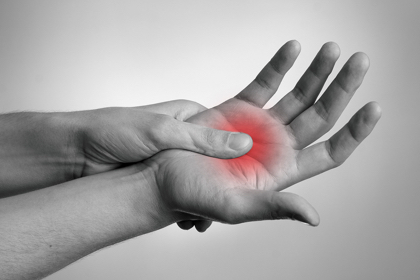Signs and Symptoms
Hand and finger injuries are very common in sport and industry, where a simple strain or laceration (cut) will settle quickly. Symptoms can include pain, tenderness, deformity, swelling and discolouration, reduced range of motion and weakness of the muscles.
Common causes of hand and finger injuries include work-related trauma and sports such as hockey, basketball, hurling. Injuries can include muscle strains, ligament sprains or sometimes fractures (broken bone). Serious fracture, dislocation or amputation will require immobilisation, precise splinting and even surgery. Many hand and finger injuries require specific rehabilitation and appropriate protection on return to sport or work.
Our Treatment & Expertise
It is imperative to seek the mechanism of injury in an acute case. A direct blow may result in a fracture, where a bang through the tip of the finger may cause a dislocation. At Bray Physiotherapy, we will complete a careful examination of the soft tissue (muscles, tendons and ligaments) and joints, and will assess for movement and stability. The degree of pain, swelling, bruising and loss of function is assessed and if a fracture is suspected a referral to the hospital will be required.
R.I.C.E. (Rest, Ice, Compression and Elevation) principles are used in the acute 24-48 hours to reduce inflammation. Splinting of a joint may be necessary if a ligament is damaged. Control of the swelling is vital and it is important to get moving with specific exercises to prevent stiffness of the joints.
Our ‘Hands-On’ approach may include massage, manual therapy, electrotherapy and/or acupuncture. Exercises are very muscle specific in this region and great care is taken to progress the home exercise programme from strength to function. A functional hand requires mobility, stability, proprioception and sensitivity.


